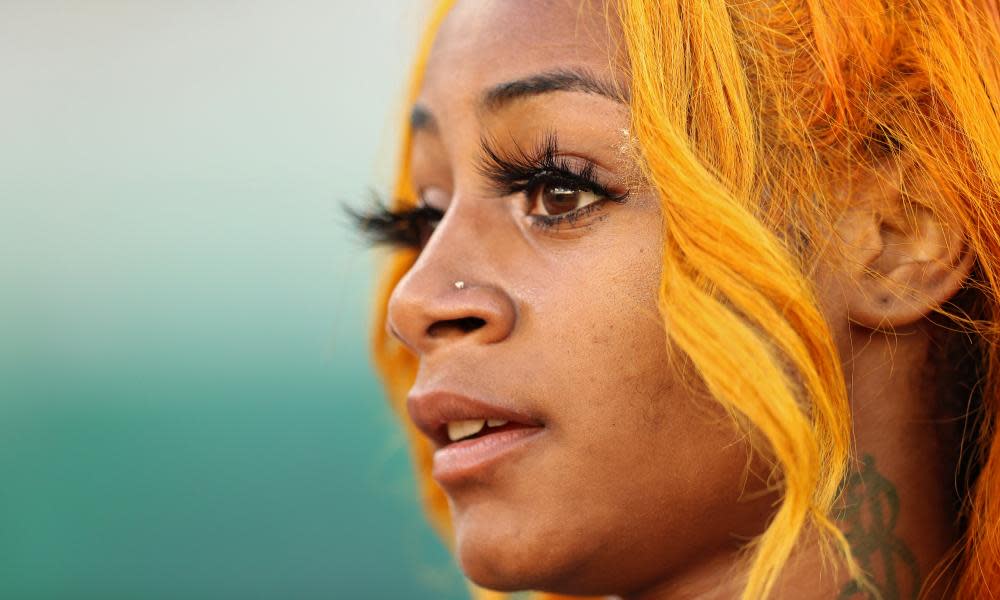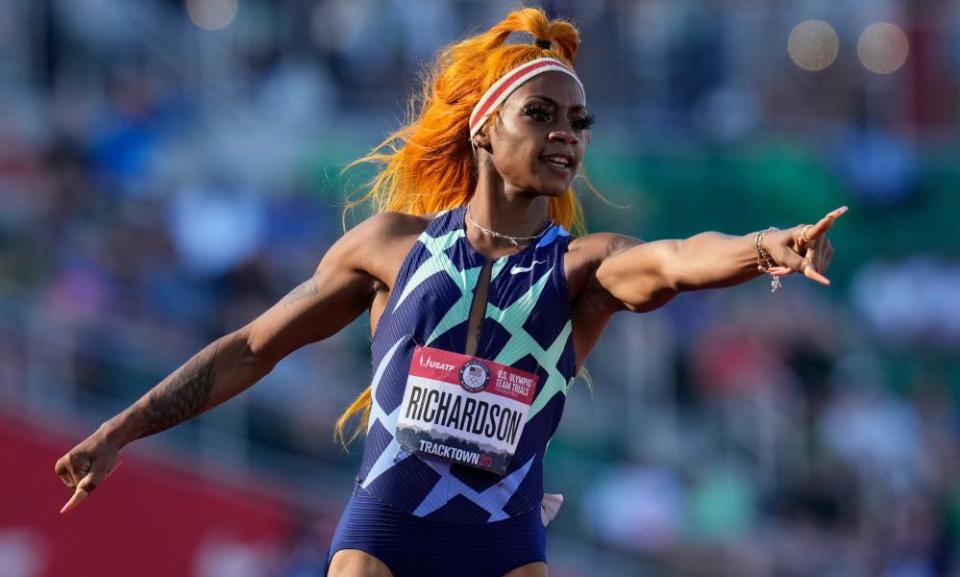Sha’Carri Richardson’s look is over the top – that’s why it matters

Despite not being part of Team USA after a failed drugs test, Sha’Carri Richardson made a reappearance yesterday in an advert for Beats by Dre soundtracked by a new song from Kanye West. With her trademark long nails, long lashes and fire-cracker hair, Richardson has underlined the point that, Olympian or not, she is one of 2021’s most electrifying style icons.
That style, which has been called “extra” (in a good way), is a celebration of aesthetic excess. “Being ‘too much’ is an important act of self-possession, self-expression and self-affirmation,” says Eric Darnell Pritchard, professor at the University of Arkansas’s English department (who goes by the pronoun they). Pritchard says that this visual statement of “over the top”-ness also plays as an important statement about the agency of black womanhood. “We see it in Richardson’s statement ‘I am THAT girl’ but we also see it in her aesthetics. It is imperative for black women to do and be supported in doing it because it is not space that is freely given to them in the world.”
Another aspect that feeds into Richardson’s unique aesthetic is her birthplace of Dallas, Texas. “I think there is some southern sensibilities and pride within her style aesthetics,” says fashion historian Darnell-Jamal Lisby. “From her hair, nails, outfit and attitude, the desire to visually elicit vibrancy through personal style is southern to the bone.”

Pritchard says that that geographical location is synonymous with celebrations of black beauty. “The American south has played an important role illustrating the beauty of expressive cultures that are unapologetically black,” they say, “particularly when blackness intersects with the self-expression of those who are poor or working-class.”
Placing her style in the canon of black pop culture icons, he references Missy Elliott and the characters Nisi (Halle Berry) and Mickey (Natalie Desselle Reid) in the 1997 film B*A*P*S, where the characters dressed flamboyantly. “Consider, too, the extra red nails of Coko of SWV and Lil’ Kim, with her nails decorated as hundred dollar bills,” Pritchard says.

Richardson also visually connects to athletic fashion trailblazer Florence Griffith Joyner (Flo-Jo) who lit up the Olympics in 88. “Flo Jo is the direct reference here,” Lisby says. “With her exuberant, flashy and beautiful costumes and her highly decorated nails, which ranged from four to six inches, she was wholly herself as a black woman.”
Griffith Joyner crafted her own visual self image, actualising the larger than life, “superhero-like,” as Lisby calls it, she had through designing her own outfits. She was also a nail technician (she supported herself working in a salon while she was training for the Olympics in 1988) so had a professional grasp of how her nail art was presented in public. “Her style was about self-possession: doing the job that she came to do, but making an assertion of belonging to herself while doing it.”

Like Joyner, Richardson is using fashion as a tool of representation. “Flo Jo set the foundation: using style as a way to culturally connect to their athletic craft and visually remain a voice for the communities they represent,” says Lisby.
Griffith Joyner was criticised for her style on the track, at the time she said people thought her famous one-legged outfit was “shocking”. Dr Pritchard believes that how Richardson’s style has been received is indicative of how far we have come in allowing a black woman to be fully herself in the public eye.

“Flo-Jo got lots of pushback at the time,” they say, “with commentary that was racist, classist and misogynistic. How people respond to Sha’Carri Richardson will say a lot about just how far things have and have not come in terms of black women being able to take up that space without ridicule.” The support Richardson received after her drugs test, from the likes of Roxane Gay as well as from the fashion industry, suggest at least a bit of progress.


